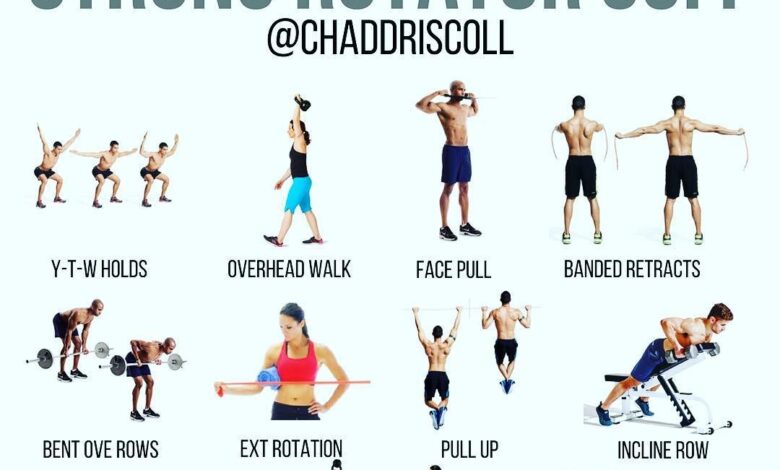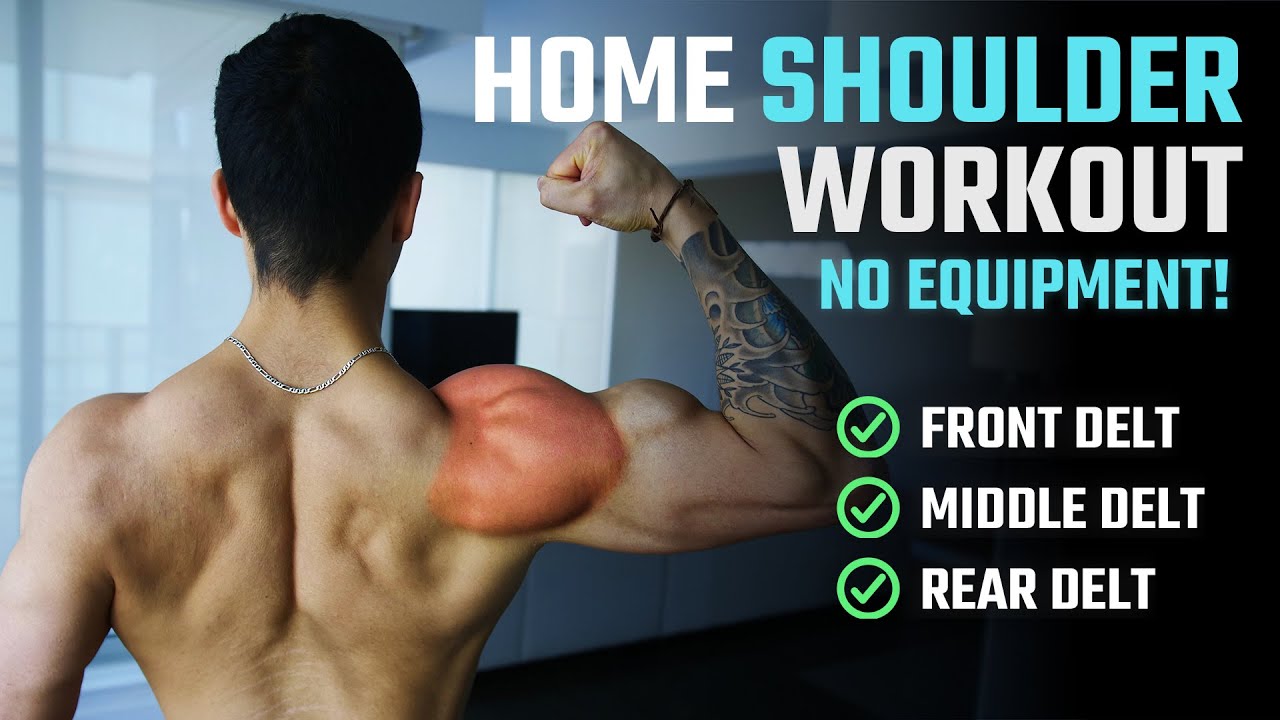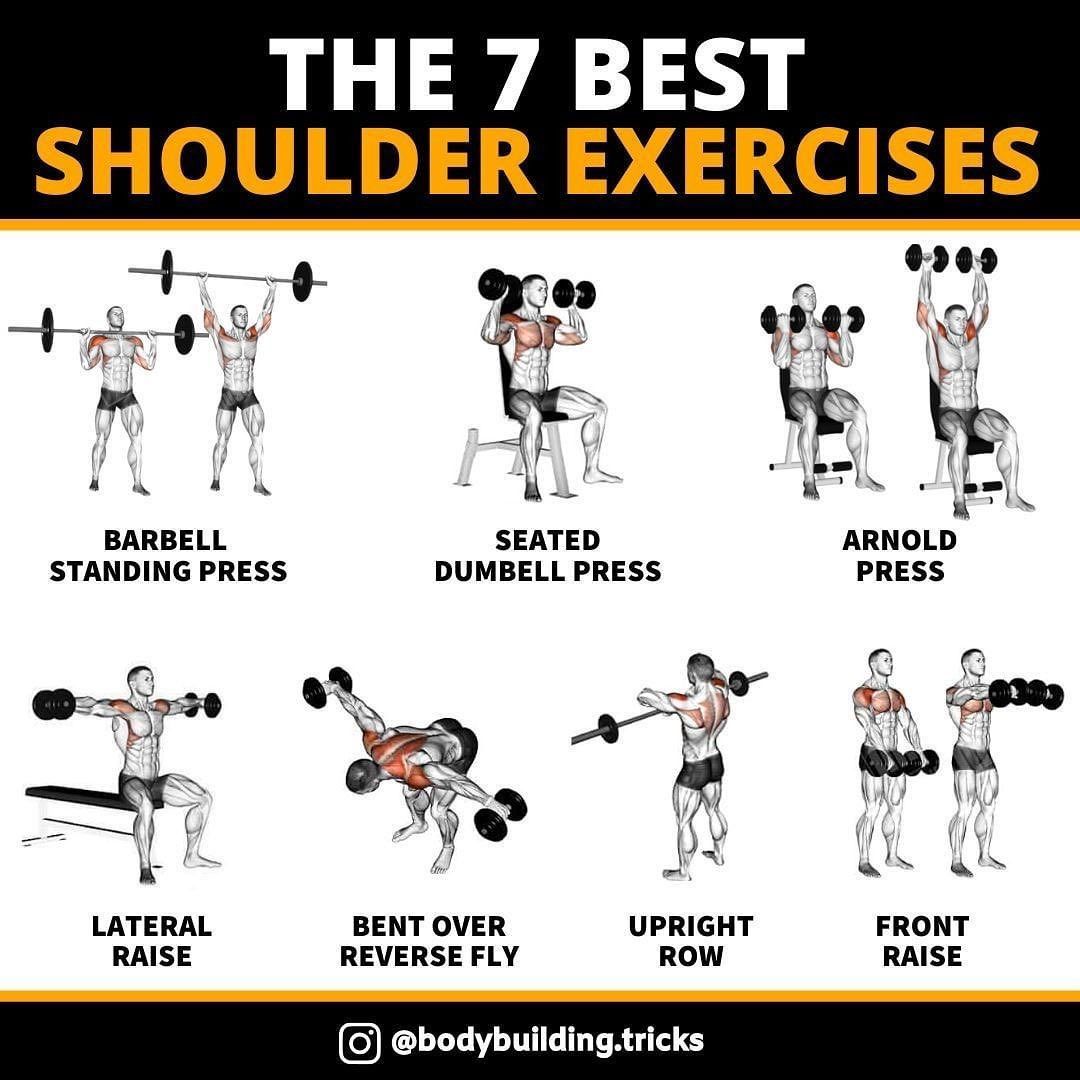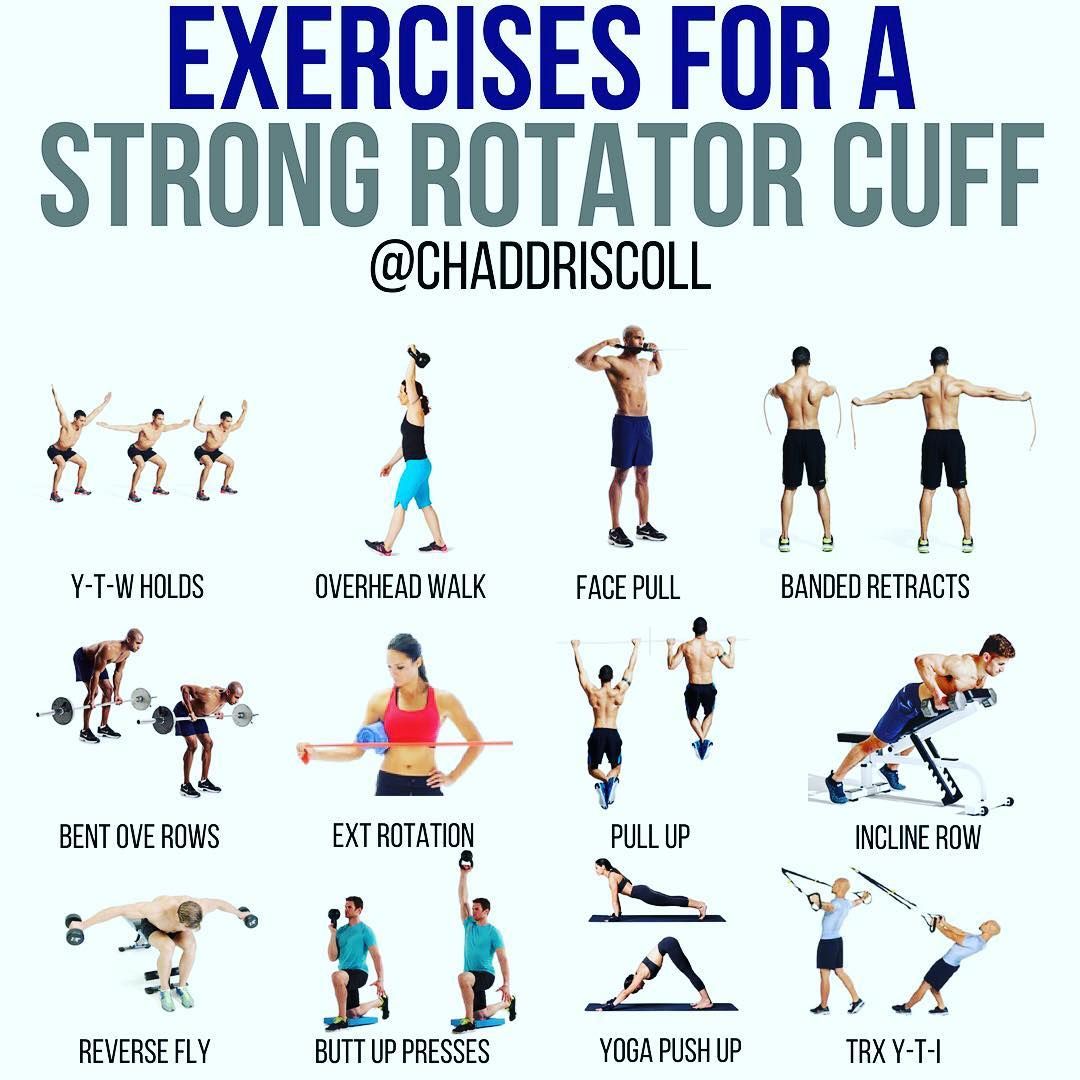
Exercises to Strengthen Your Shoulders: A Guide to Power and Stability
Exercises to strengthen your shoulders set the stage for a journey towards enhanced power, stability, and overall well-being. Strong shoulders are essential for everyday activities, from carrying groceries to playing with your kids. They also play a crucial role in athletic performance, enabling you to throw, lift, and push with greater force.
But beyond these obvious benefits, strong shoulders can also help prevent injuries, improve posture, and reduce pain. Whether you’re a seasoned athlete or just looking to improve your overall fitness, this guide will provide you with everything you need to know to build strong, healthy shoulders.
We’ll delve into the anatomy of the shoulder, explore different types of exercises, and create customized workout plans to suit your fitness level. We’ll also address common shoulder injuries and discuss ways to prevent them. So, get ready to unlock the power of your shoulders and experience the many benefits that come with them.
Importance of Strong Shoulders: Exercises To Strengthen Your Shoulders
Strong shoulders are essential for a wide range of activities, from everyday tasks to athletic endeavors. They provide stability and support for the upper body, allowing us to perform movements with power and precision.
Everyday Activities
Strong shoulders play a crucial role in everyday activities, such as lifting, carrying, and reaching. For instance, when you carry groceries, lift a heavy box, or reach for an item on a high shelf, your shoulder muscles are working hard to support your arm and maintain stability.
Weak shoulders can make these tasks difficult and increase the risk of injury.
Athletic Performance
In sports and physical activities, strong shoulders are essential for optimal performance. Athletes in various disciplines, including baseball, tennis, swimming, and weightlifting, rely on strong shoulders for power, speed, and accuracy. Strong shoulders allow athletes to throw with force, swing with precision, and generate power during overhead movements.
Health Risks Associated with Weak Shoulders
Weak shoulders can lead to various health issues, including:
- Shoulder pain and instability: Weak shoulder muscles can make the joint more susceptible to pain, instability, and injury.
- Rotator cuff tears: The rotator cuff is a group of muscles and tendons that help stabilize the shoulder joint. Weak rotator cuff muscles increase the risk of tears, which can cause significant pain and limitation of movement.
- Impingement syndrome: This condition occurs when the tendons and bursa in the shoulder are compressed, leading to pain and inflammation. Weak shoulder muscles can contribute to impingement syndrome by making the joint less stable.
- Poor posture: Weak shoulder muscles can contribute to poor posture, leading to rounded shoulders, neck pain, and back pain.
Types of Shoulder Exercises

Strengthening your shoulders involves targeting various muscle groups that contribute to stability, mobility, and overall strength. This section delves into the types of shoulder exercises, categorized by the muscle groups they primarily target. Understanding these categories will help you create a well-rounded workout routine that addresses all aspects of shoulder health and performance.
Strong shoulders are crucial for everyday activities and can enhance your overall fitness. Incorporating regular exercises like push-ups, rows, and lateral raises can build strength and stability. If you’re looking to take your fitness journey further and explore a holistic approach to weight loss, check out my your 7 day guide to forming better habits for weight loss.
It provides a comprehensive plan to establish healthy habits and achieve your weight loss goals. Once you’ve built a solid foundation with healthy habits, you can return to your shoulder exercises with even more energy and focus!
Deltoid Exercises
The deltoid muscle is responsible for shoulder abduction (raising the arm away from the body), flexion (raising the arm forward), and extension (raising the arm backward).
- Dumbbell Shoulder Press: This exercise targets all three heads of the deltoid muscle.
To perform a dumbbell shoulder press, sit or stand with your feet shoulder-width apart. Hold a dumbbell in each hand, palms facing each other. Press the dumbbells up overhead, keeping your elbows slightly bent. Slowly lower the dumbbells back to the starting position.
- Variations:
- Seated dumbbell shoulder press (targets more stability)
- Standing dumbbell shoulder press (targets more core engagement)
- Arnold press (targets all three heads of the deltoid, emphasizing external rotation)
- Variations:
- Lateral Raises: This exercise targets the middle deltoid muscle, responsible for shoulder abduction.
To perform a lateral raise, stand or sit with your feet shoulder-width apart. Hold a dumbbell in each hand, palms facing your body. Raise the dumbbells out to the sides, keeping your elbows slightly bent. Slowly lower the dumbbells back to the starting position.
- Variations:
- Dumbbell lateral raise (targets the middle deltoid)
- Cable lateral raise (provides resistance throughout the entire range of motion)
- Bent-over lateral raise (targets the rear deltoid)
- Variations:
- Front Raises: This exercise targets the front deltoid muscle, responsible for shoulder flexion.
To perform a front raise, stand or sit with your feet shoulder-width apart. Hold a dumbbell in each hand, palms facing your body. Raise the dumbbells in front of you, keeping your elbows slightly bent. Slowly lower the dumbbells back to the starting position.
- Variations:
- Dumbbell front raise (targets the front deltoid)
- Cable front raise (provides resistance throughout the entire range of motion)
- Barbell front raise (targets the front deltoid, emphasizing strength)
- Variations:
Rotator Cuff Exercises
The rotator cuff muscles (supraspinatus, infraspinatus, teres minor, and subscapularis) stabilize the shoulder joint, allowing for a wide range of motion and preventing injuries.
- External Rotations: This exercise targets the infraspinatus and teres minor muscles, responsible for external rotation of the shoulder.
To perform an external rotation, sit or stand with your feet shoulder-width apart. Hold a dumbbell in one hand, palm facing your body. Bend your elbow at a 90-degree angle and keep your upper arm close to your side. Rotate your forearm outward, keeping your elbow close to your body. Slowly lower the dumbbell back to the starting position.
- Variations:
- Dumbbell external rotation (targets the infraspinatus and teres minor)
- Cable external rotation (provides resistance throughout the entire range of motion)
- Band external rotation (targets the infraspinatus and teres minor, emphasizing stability)
- Variations:
- Internal Rotations: This exercise targets the subscapularis muscle, responsible for internal rotation of the shoulder.
To perform an internal rotation, sit or stand with your feet shoulder-width apart. Hold a dumbbell in one hand, palm facing your body. Bend your elbow at a 90-degree angle and keep your upper arm close to your side. Rotate your forearm inward, keeping your elbow close to your body. Slowly lower the dumbbell back to the starting position.
Strong shoulders are essential for everyday activities, from carrying groceries to lifting weights. To build those muscles, I incorporate a variety of exercises into my routine, focusing on movements that engage the entire shoulder complex. While I enjoy the delicious flavors of the Mediterranean diet, I’ve found that incorporating some low-carb strategies can be beneficial, and I’ve discovered some great tips on ways to make the Mediterranean diet low carb friendly.
This approach helps me maintain energy levels during my workouts and keeps my body feeling its best. After a great workout, I reward myself with a healthy, low-carb Mediterranean meal, fueling my body for the next day’s shoulder-strengthening exercises.
- Variations:
- Dumbbell internal rotation (targets the subscapularis)
- Cable internal rotation (provides resistance throughout the entire range of motion)
- Band internal rotation (targets the subscapularis, emphasizing stability)
- Variations:
- Scapular Retractions: This exercise targets the rhomboids and trapezius muscles, which help stabilize the shoulder blade.
To perform a scapular retraction, stand or sit with your feet shoulder-width apart. Extend your arms in front of you, palms facing each other. Squeeze your shoulder blades together, pulling your arms back slightly. Hold for a few seconds, then slowly return to the starting position.
- Variations:
- Band scapular retractions (targets the rhomboids and trapezius, emphasizing stability)
- Wall slides (targets the rhomboids and trapezius, emphasizing stability)
- Variations:
Trapezius Exercises
The trapezius muscle is responsible for shoulder elevation (shrugging), depression (lowering the shoulder), and retraction (pulling the shoulder blades together).
- Shrugs: This exercise targets the upper trapezius muscle, responsible for shoulder elevation.
To perform a shrug, stand or sit with your feet shoulder-width apart. Hold a dumbbell in each hand, palms facing your body. Raise your shoulders up towards your ears, keeping your elbows straight. Slowly lower your shoulders back to the starting position.
- Variations:
- Dumbbell shrugs (targets the upper trapezius)
- Barbell shrugs (targets the upper trapezius, emphasizing strength)
- Cable shrugs (provides resistance throughout the entire range of motion)
- Variations:
- Face Pulls: This exercise targets the middle and lower trapezius muscles, responsible for shoulder retraction.
To perform a face pull, stand facing a cable machine with a rope attachment. Grab the rope with an overhand grip, slightly wider than shoulder-width apart. Pull the rope towards your face, keeping your elbows high and your chest up. Slowly return to the starting position.
Strengthening your shoulders is crucial for everyday activities, from carrying groceries to playing with your kids. While you’re focusing on your physical health, don’t forget about the visual appeal of your Thanksgiving table! Check out these 5 ways to fill your thanksgiving table with color to create a festive and inviting atmosphere.
Just like a well-balanced meal, a well-rounded exercise routine should include exercises that target your shoulders, ensuring you can lift those heavy plates of food with ease!
- Variations:
- Cable face pulls (targets the middle and lower trapezius)
- Band face pulls (targets the middle and lower trapezius, emphasizing stability)
- Variations:
Warm-up and Cool-down Routines

A proper warm-up and cool-down routine are essential for maximizing the benefits of shoulder exercises while minimizing the risk of injury. Warming up prepares your muscles for the demands of exercise, while cooling down helps your body recover and prevent soreness.
Warm-up Routine
A comprehensive warm-up routine should focus on increasing blood flow to the shoulder muscles and improving range of motion. Here’s a sample warm-up routine:
- Light Cardio:Begin with 5-10 minutes of light cardio, such as walking, jogging in place, or jumping jacks. This helps elevate your heart rate and warm up your muscles.
- Dynamic Stretching:Perform dynamic stretches that involve controlled movements, such as arm circles, shoulder rolls, and torso twists. These stretches improve flexibility and prepare your muscles for the exercises to come.
- Shoulder-Specific Mobility Exercises:Include exercises that target the shoulder joint, such as:
- Scapular Push-Ups:Lie face down on the floor with your hands shoulder-width apart. Push up off the ground, squeezing your shoulder blades together. Lower back down slowly. Repeat 10-15 times.
- Wall Slides:Stand facing a wall with your feet shoulder-width apart. Place your hands on the wall at shoulder height. Slowly slide your body down the wall until your chest touches the wall. Hold for a few seconds, then push back up.
Repeat 10-15 times.
Importance of Stretching and Mobility
Stretching and mobility exercises are crucial for shoulder health, as they help to:
- Increase Range of Motion:Stretching improves flexibility and allows for greater movement in the shoulder joint. This can help prevent stiffness and improve performance in daily activities and exercises.
- Reduce Risk of Injury:Tight muscles around the shoulder can increase the risk of injury. Regular stretching helps to loosen these muscles, making the shoulder joint more stable and less prone to injury.
- Improve Posture:Poor posture can put strain on the shoulder muscles and lead to pain. Stretching can help improve posture by lengthening tight muscles and strengthening weak ones.
Cool-down Routine, Exercises to strengthen your shoulders
After your shoulder exercises, a proper cool-down routine helps your body recover and prevents muscle soreness.Here’s a sample cool-down routine:
- Light Cardio:Continue with 5-10 minutes of light cardio, such as walking or slow jogging in place, to gradually lower your heart rate.
- Static Stretching:Hold each stretch for 30-60 seconds, focusing on the muscles you worked during your workout. Some examples include:
- Cross-Body Shoulder Stretch:Grasp your right arm just above the elbow with your left hand. Gently pull your right arm across your body until you feel a stretch in your right shoulder.
Hold for 30 seconds and repeat on the other side.
- Overhead Triceps Stretch:Raise your right arm overhead and bend your elbow, bringing your right hand down towards your upper back. Use your left hand to gently pull your right elbow closer to your head until you feel a stretch in your right triceps.
Hold for 30 seconds and repeat on the other side.
- Cross-Body Shoulder Stretch:Grasp your right arm just above the elbow with your left hand. Gently pull your right arm across your body until you feel a stretch in your right shoulder.
- Foam Rolling:Use a foam roller to target specific muscle groups in the shoulders, upper back, and chest. This can help release tension and improve flexibility.
Wrap-Up

Strengthening your shoulders is an investment in your overall health and well-being. By incorporating these exercises into your routine, you’ll not only improve your physical performance but also enhance your quality of life. Remember to listen to your body, prioritize proper form, and gradually increase the intensity as you progress.
With dedication and consistency, you’ll be well on your way to achieving stronger, healthier shoulders that will support you through life’s adventures.

